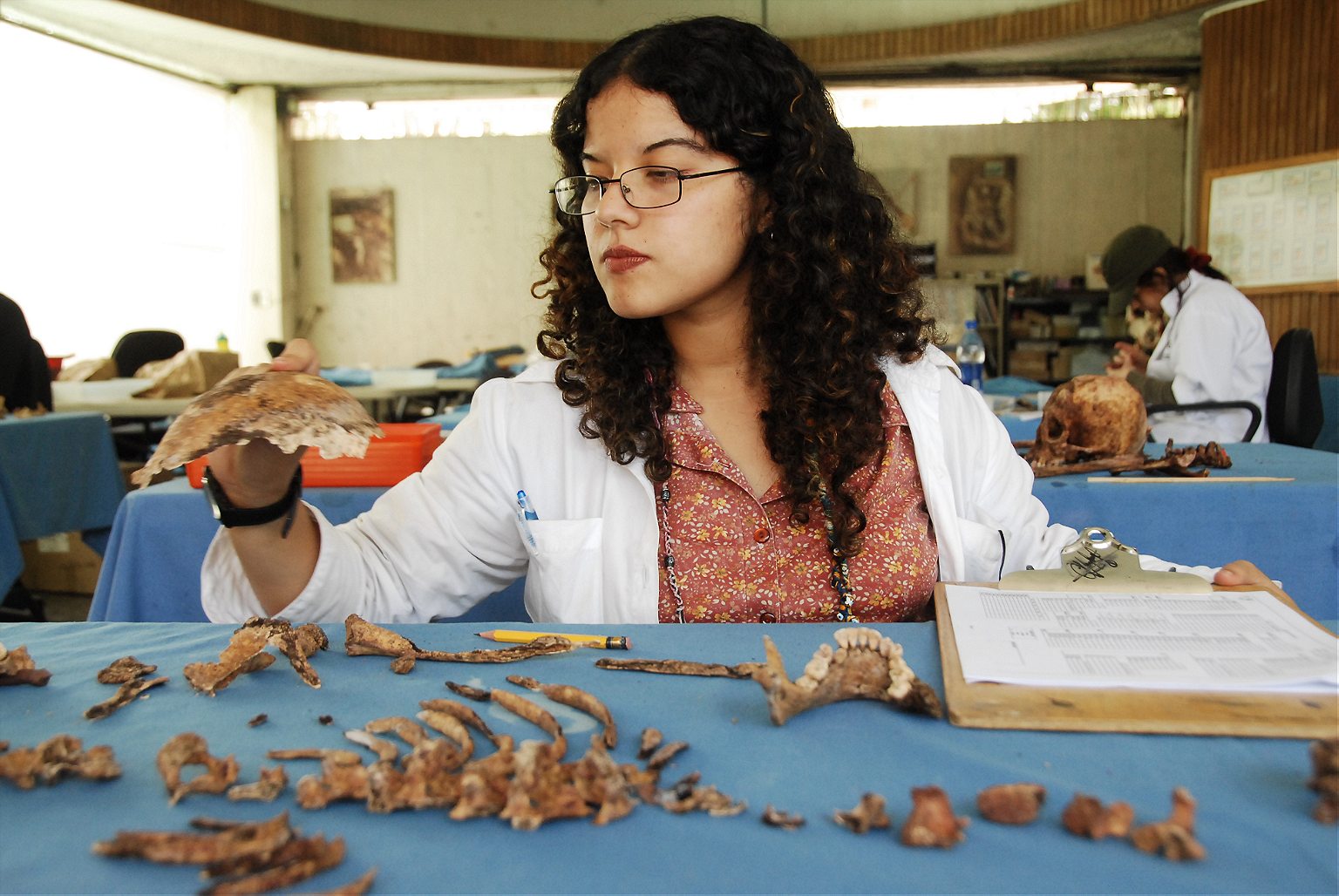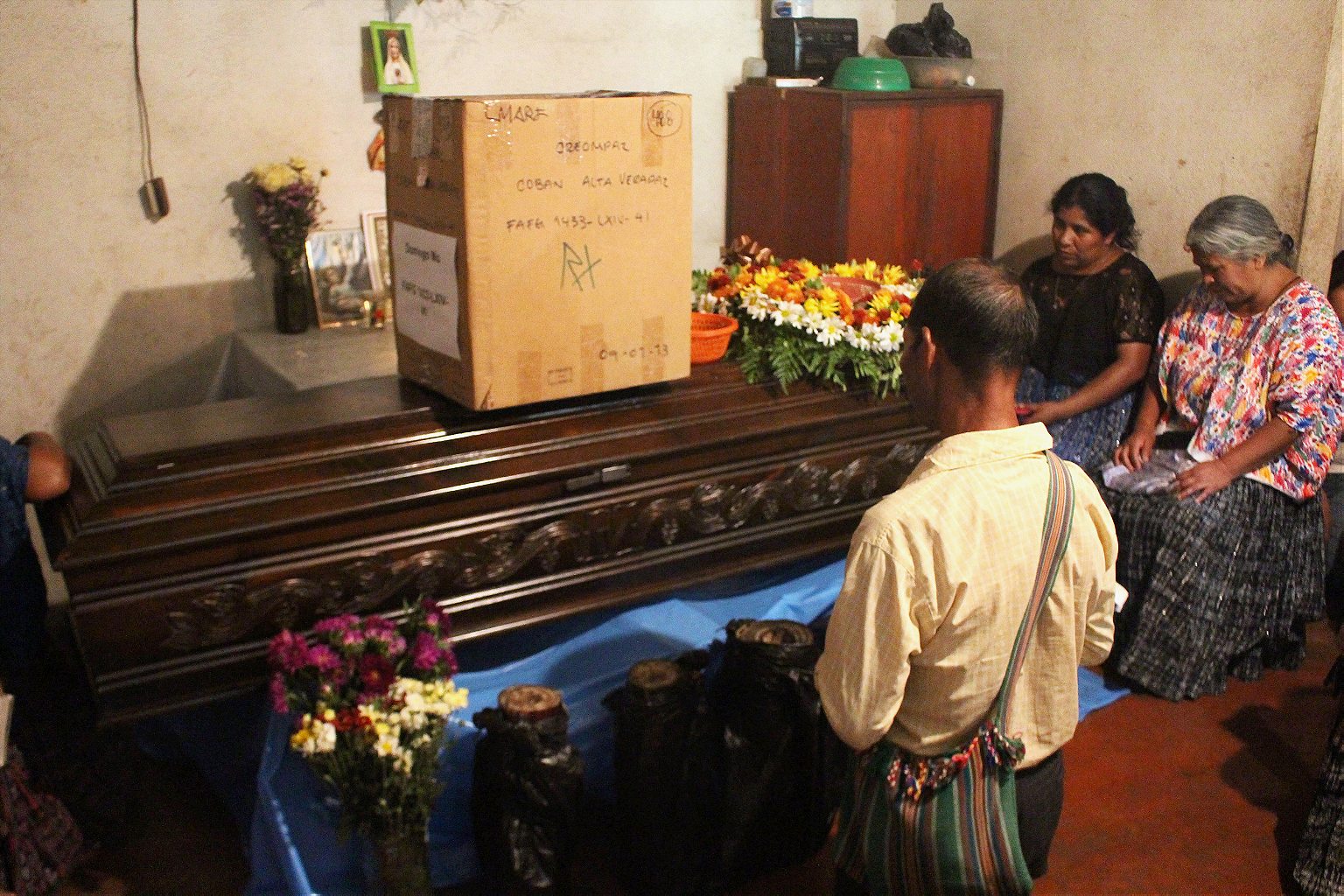Identifying the bodies after a 36-year civil war.
Two men carry a casket uphill in Santa Cruz, a predominantly Mayan rural town in Alta Verapaz, Guatemala, 125 miles north of the capital. They are followed by a group of women wearing long patterned skirts and traditional huipil shirts.
They are on their way to pay their respects to Domingo Mo, a father and husband who died at the age of 32. After more than three decades buried in a mass grave dating back to the country’s civil war, the skeleton inside the casket no longer bears his likeness. Mo would have been 66 today.
Domingo Mo was one of more than 40,000 Guatemalans who disappeared during the country’s brutal civil war that was fought between the government and rebel leftist groups. More than 200,000 people—most of them indigenous Maya—were killed during the conflict, which ended in 1996.

Mo’s body was one of 550 found at a military base called CREOMPAZ, and identified by the Guatemalan Forensic Anthropology Foundation. Thanks in part to their forensic evidence, eight retired military officials are standing trial for crimes related to the disappearances during the 36-year conflict.
At a lab in Guatemala City, Alma Vasquéz, an anthropologist at the Guatemalan Forensic Anthropology Foundation (FAFG), peers through her purple-rimmed glasses as she scrubs a femur clean with a blue toothbrush. When the bone is clean, she places it to her right where sets of bones from different parts of the body—skull, spine, hands—are organized in groups. Once all the bones are clean, she will reconstruct the skeleton and lay it on a table. Then, she can figure out its age, gender and the cause of death.
Across the room, the skeleton of a young boy lies on a navy blue tablecloth. His body was found buried with three others in a Mayan community in Guatemala’s western highlands. Vasquéz has determined that he was between six and nine years old when he died, more than two decades ago. He had been shot in the head three times.

The bodies were discovered after witnesses told a government agency about a possible mass grave in their neighborhood. Once the report was filed, the Foundation conducted in-depth interviews to gather more information about the potential burial site. After getting a general idea of the location, they used archeological techniques to identify anomalies in the terrain that could indicate where the earth had been overturned.
Next, they excavated the bodies. Sometimes there were just a few, sometimes there were hundreds. The bodies were sent to the lab in the capital, Guatemala City, where a researcher constructed the skeleton and a profile of the person each had once been. Then a bone sample was sent to a nearby DNA lab to find a potential match within the foundation’s database of DNA samples from family members searching for loved ones.
“We do this work uncovering what happened in the past for the people who live today,” said Jose Suasnavar, the assistant director of Guatemalan Forensic Anthropology Foundation. “But we also do it because we want to prevent [these atrocities] in the future. If the human brutality of actions like these are not known, we are destined to repeat them.”

In 1982, military officers barged into Domingo Mo’s home. They threw him on the floor, bound his hands and dragged him away as his wife Isabel and sons, nine-year-old Cristobal, and Osvaldo, 15, screamed. That was the last time they saw him alive. Stories like these are commonplace in indigenous communities in Guatemala. Soon after, the family fled their home, which was later burned down by the military. They hid in the mountains for years, with barely enough food to eat.
The Mo family had been targeted during the Guatemalan government’s scorched earth campaign, which focused on destroying anyone or anything that could be useful to the guerrillas. It was brutal to the region, and has been deemed a genocide by the truth commission for targeting the Maya ethnic group.
The independent Commission for Historical Clarification found that the military was responsible for more than 90 percent of the human rights abuses during the war. The Guatemalan government’s brutal repression campaign was one of many carried out in the name of fighting communism in Latin America during the Cold War, often with implicit or explicit approval from the US government.
In Guatemala, efforts to bring about justice for the human rights violations during the war have increased in recent years, but a culture of impunity for military and political elites continues. In 2013, former dictator Efrain Rios Montt was convicted of genocide, but the ruling was overturned just days later. The retrial has been suspended.
On a recent Friday morning, a representative from the forensic anthropology institute drove to Alta Verapaz. Domingo Mo’s remains sat on the back seat in a cardboard box. Inside, his body parts were sorted into brown paper bags and labeled for easy reconstruction in the casket. The delivery of his remains came four years after his sons submitted their DNA samples.

Mo’s funeral did not bring the closure the family hoped for. His bones did not show any visible trauma, such as bullet wounds or fractures that could help determine his cause of death. Much of the evidence of what happened to Domingo after he disappeared was destroyed as his body decayed over decades.
The three-hour gathering is filled with laughter, indicating the community’s resilience despite decades of hardship. It is only during the 20-minute funeral ceremony that a profound sadness comes over the group. The family, friends, and neighbors pray in their native Poqomchi language as tears roll down their cheeks.
“I barely cried today because I’ve already cried so much throughout the years,” says Mo’s son Cristobal. “They kidnapped and killed my father and for so many years they walked free. Living comfortably in their military prisons isn’t justice.”
Cristobal, who is now 42, says he will not be at peace until he sees justice for the crimes committed against his family. “I’m grateful that my father has appeared with his bones still intact,” Cristobal says. “We are not seeking vengeance. All we are looking for is justice.”